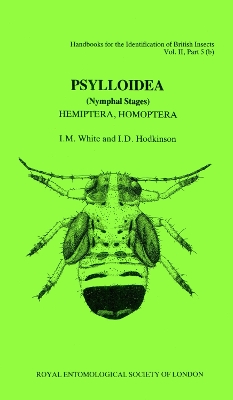Royal Entomological Society
1 total work
The handbook to the adult British Psylloidea (Hodkinson & White, 1979) gives a general introduction to the psyllids and lists those species for which the nymph has been described. It should be consulted for information on the distributions and biology of the British species. Earlier nymphal descriptions, such as those of Scott (1878, 1879, 1880a,b, 1881, 1883 a,b,c) were mainly colour descriptions of little taxonomic significance although Löw (1874, 1876, 1879, 1886) occasionally presented outline drawings. In a later paper Löw (1884) summarised the literature on psyllid nymphs. The first detailed nymphal descriptions of taxonomic value were those of Ferris (1923, 1925 an 1926) who recognised two morphological forms, the 'psylline' and 'triozine' types. Rahman (1932) later expanded this classification and recognised a further group of nymphs, the so called 'pauropsylline' type although this latter group is variable and has little basis in reality (White, 1980). Recently, Mathur (1975) in his account of the 'Psyllidae of the Indian Sub-continent' sets baseline standard for nymphal descriptions. The only keys to nymphal psyllids, covering more than a species complex, separate the species groups of Psylla (Ossiannilsson, 1970, Loginova, 1978) and the Swedish species of Psylla (Ossiannilsson, 1970). Keys to families and genera have not previously been published. This work cover final (5th) instar nymphs only. However, if the identity of the host plant is known it should be possible to determine earlier instars with a reasonable degree of certainty. A complete list of host-plants is given by Hodkinson & White (1979).
